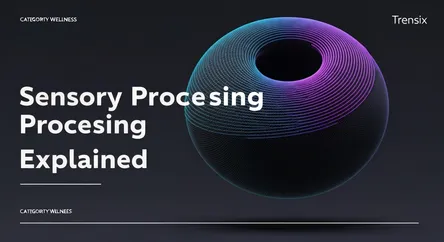Wellness
Sensory Processing Explained

Discover how your brain interprets the world through sensory processing and why understanding it is key to mindfulness and managing daily stimulation.
What is it?
Sensory processing is the neurological process of organizing and interpreting information from our senses. It's how our brain makes sense of sight, sound, smell, taste, and touch, plus internal senses like balance (vestibular) and body awareness (proprioception). When this system works efficiently, we respond to our environment appropriately. However, for some individuals, this process can be disorganized, leading to challenges in daily functioning. It’s fundamental to how we experience the world around us and within ourselves.
Why is it trending?
Awareness is growing with conversations around neurodiversity, including autism and ADHD, where sensory differences are common. The wellness community is embracing the concept, recognizing that our sensory environment profoundly impacts our mental state. People are seeking to understand their unique sensory profiles to better manage stress and improve focus. This shift moves the topic from a purely clinical context into a mainstream tool for self-awareness and creating environments that support personal well-being.
How does it affect people?
Everyone's sensory profile is unique. Some people are hypersensitive and find common sounds, lights, or textures overwhelming. Others are hyposensitive and might seek intense sensory input, like loud music or constant movement, to feel regulated. Understanding your profile explains why certain situations are draining or calming. It empowers individuals to adapt their routines, such as using noise-canceling headphones or taking movement breaks, to improve daily comfort and support their mental health.